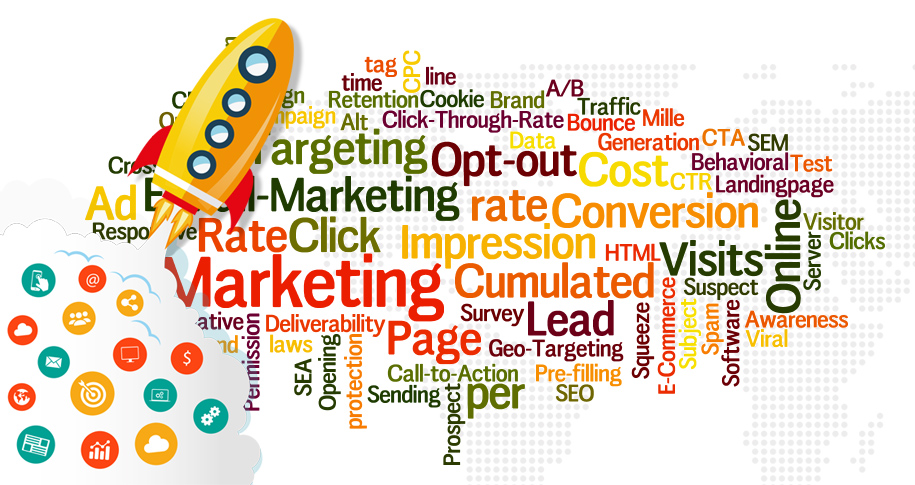What is RetargetingWhat is Retargeting?
Retargeting is a... More?
RetargetingWhat is Retargeting?
Retargeting is a... More is a digital marketingWhat Is Digital Marketing?
Digital ma... More technique that targets users who have previously interacted with your brand but did not complete a desired action, such as purchasing a product, signing up for a newsletter, or filling out a contact form. This strategy uses cookies to track visitors and display customized ads to them as they navigate other websites or social mediaDefinition
Brand awareness is the ext... More platforms.
RetargetingWhat is Retargeting?
Retargeting is a... More is an effective way to re-engage visitors who are already familiar with your brand, increasing the likelihood that they will return and complete the intended action. This strategy is often used interchangeably with remarketingWhat is Remarketing?
Remarketing is a... More, although remarketingWhat is Remarketing?
Remarketing is a... More typically focuses more on email campaigns while retargetingWhat is Retargeting?
Retargeting is a... More emphasizes display ads.
Why is RetargetingWhat is Retargeting?
Retargeting is a... More Important?
- Higher Conversion Rates
- RetargetingWhat is Retargeting?
Retargeting is a... More is highly effective in improving conversion rates because it focuses on users who have already shown interest in your product or service. Since these individuals are familiar with your brand, they are more likely to convert when exposed to tailored ads reminding them of what they viewed or abandoned. - Example: A user who added items to their shopping cart but didn’t purchase will be shown retargetingWhat is Retargeting?
Retargeting is a... More ads displaying the same products they left behind, encouraging them to finalize the purchase.
- RetargetingWhat is Retargeting?
- Cost-Effective Strategy
- Compared to other advertisingDefinition
Brand awareness is the ext... More methods, retargetingWhat is Retargeting?
Retargeting is a... More is often more cost-effective because it targets a warm audience. This means that the cost per conversion is typically lower than reaching out to completely new prospects who have never interacted with your brand. - Example: RetargetingWhat is Retargeting?
Retargeting is a... More ads generally result in a lower cost per acquisition (CPA) than prospecting ads, which helps maximize your advertisingDefinition
Brand awareness is the ext... More budget.
- Compared to other advertisingDefinition
- Increased Brand AwarenessDefinition
Brand awareness is the ext... More and Recall- RetargetingWhat is Retargeting?
Retargeting is a... More helps keep your brand top-of-mind for potential customers. Even if they don’t immediately make a purchase, being repeatedly exposed to your brand creates a sense of familiarity and trust, increasing the chances of a future conversion. - Example: A potential customer who frequently sees your retargetingWhat is Retargeting?
Retargeting is a... More ads is more likely to choose your brand over competitors when they’re ready to make a purchase.
- RetargetingWhat is Retargeting?
- Personalized Experience
- With retargetingWhat is Retargeting?
Retargeting is a... More, you can deliver highly personalized and relevant ads to users based on their previous interactions with your site. This ensures that the ads they see are tailored to their interests, which increases the likelihood of engagement. - Example: If a user browsed your online store’s footwear section, they could be shown ads featuring the exact shoes they viewed, potentially offering a discount or special promotion to encourage them to complete the purchase.
- With retargetingWhat is Retargeting?
How to Implement RetargetingWhat is Retargeting?
Retargeting is a... More
- Tracking with Cookies
- RetargetingWhat is Retargeting?
Retargeting is a... More relies on cookies to track users’ activities across your site. When a user visits your site and takes specific actions, like adding products to their cart or viewing certain pages, a cookie is placed on their browser. This cookie enables your retargetingWhat is Retargeting?
Retargeting is a... More platform to display ads to them as they visit other websites or social mediaDefinition
Brand awareness is the ext... More channels. - Example: After a user visits your product page and leaves without making a purchase, cookies track their actions and show them ads related to those products as they browse elsewhere.
- RetargetingWhat is Retargeting?
- Segmenting Your Audience
- For more effective retargetingWhat is Retargeting?
Retargeting is a... More, segment your audience based on their behavior on your website. This could include categories such as users who abandoned their shopping cart, those who visited a specific product page, or those who engaged with certain content. - Example: You can create a custom audience for users who abandoned their cart and serve them a personalized ad with a special discount code to entice them to complete their purchase.
- For more effective retargetingWhat is Retargeting?
- Leverage Multiple Platforms
- RetargetingWhat is Retargeting?
Retargeting is a... More can be applied across various platforms, such as Google AdsWhat Is Google Ads?
Google Ads (forme... More, Facebook, Instagram, Twitter, and other ad networks. By utilizing multiple channels, you can increase the chances of reaching your audience and re-engaging them with your brand. - Example: After a user views your website, they might see your retargetingWhat is Retargeting?
Retargeting is a... More ad on Facebook, then later on Instagram or a related website, reinforcing your message.
- RetargetingWhat is Retargeting?
Conclusion
RetargetingWhat is Retargeting?
Retargeting is a... More is a highly effective strategy for reconnecting with users who have already interacted with your brand. By showing personalized and relevant ads to these potential customers, you increase the likelihood of converting them into paying customers. RetargetingWhat is Retargeting?
Retargeting is a... More not only enhances conversion rates but also provides a cost-effective way to maximize the return on your marketing investment.
